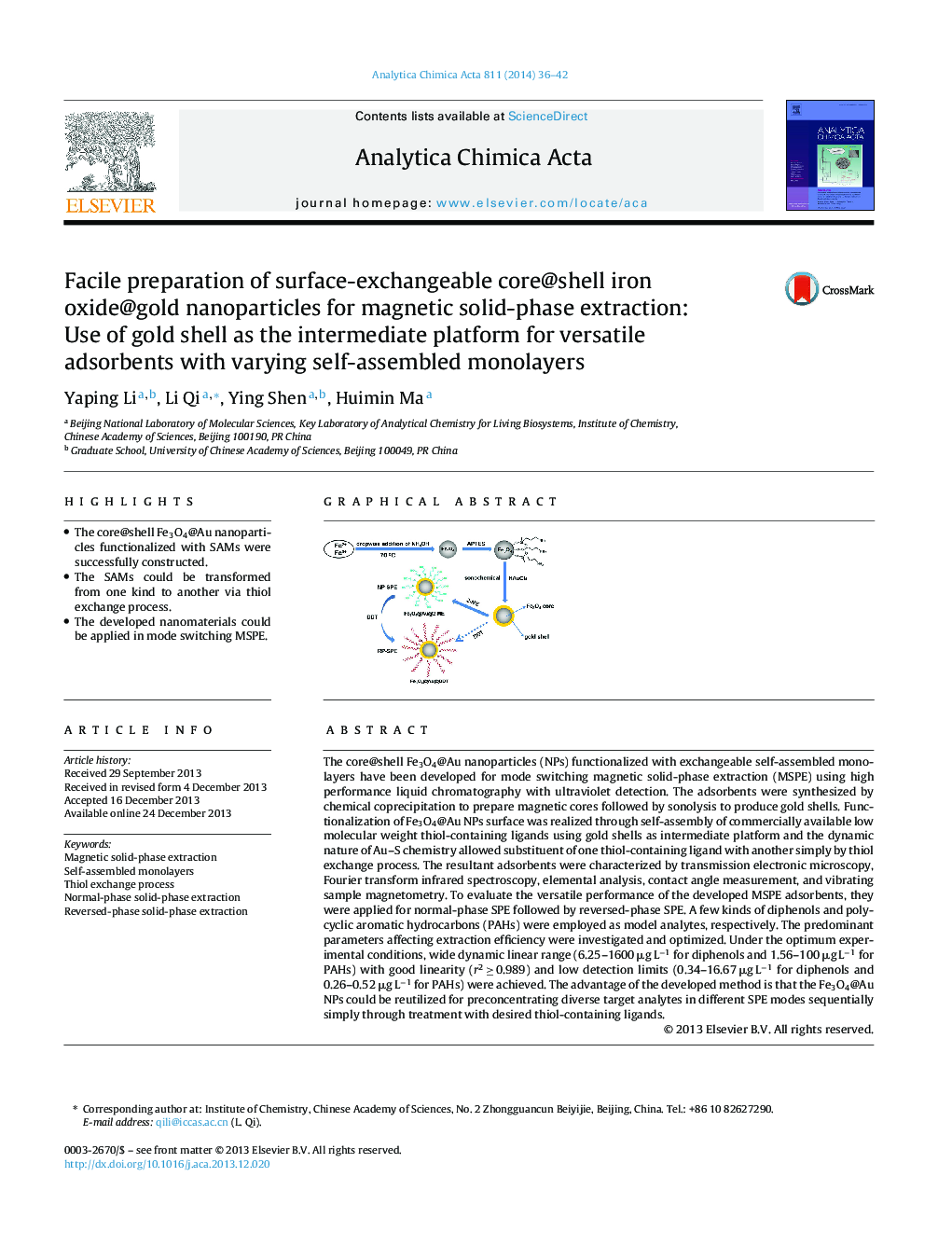| Article ID | Journal | Published Year | Pages | File Type |
|---|---|---|---|---|
| 1164394 | Analytica Chimica Acta | 2014 | 7 Pages |
•The core@shell Fe3O4@Au nanoparticles functionalized with SAMs were successfully constructed.•The SAMs could be transformed from one kind to another via thiol exchange process.•The developed nanomaterials could be applied in mode switching MSPE.
The core@shell Fe3O4@Au nanoparticles (NPs) functionalized with exchangeable self-assembled monolayers have been developed for mode switching magnetic solid-phase extraction (MSPE) using high performance liquid chromatography with ultraviolet detection. The adsorbents were synthesized by chemical coprecipitation to prepare magnetic cores followed by sonolysis to produce gold shells. Functionalization of Fe3O4@Au NPs surface was realized through self-assembly of commercially available low molecular weight thiol-containing ligands using gold shells as intermediate platform and the dynamic nature of Au–S chemistry allowed substituent of one thiol-containing ligand with another simply by thiol exchange process. The resultant adsorbents were characterized by transmission electronic microscopy, Fourier transform infrared spectroscopy, elemental analysis, contact angle measurement, and vibrating sample magnetometry. To evaluate the versatile performance of the developed MSPE adsorbents, they were applied for normal-phase SPE followed by reversed-phase SPE. A few kinds of diphenols and polycyclic aromatic hydrocarbons (PAHs) were employed as model analytes, respectively. The predominant parameters affecting extraction efficiency were investigated and optimized. Under the optimum experimental conditions, wide dynamic linear range (6.25–1600 μg L−1 for diphenols and 1.56–100 μg L−1 for PAHs) with good linearity (r2 ≥ 0.989) and low detection limits (0.34–16.67 μg L−1 for diphenols and 0.26–0.52 μg L−1 for PAHs) were achieved. The advantage of the developed method is that the Fe3O4@Au NPs could be reutilized for preconcentrating diverse target analytes in different SPE modes sequentially simply through treatment with desired thiol-containing ligands.
Graphical abstractFigure optionsDownload full-size imageDownload as PowerPoint slide
